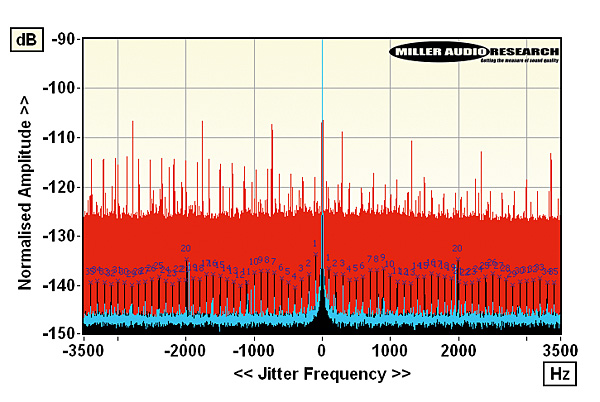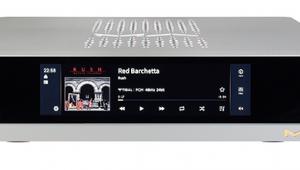Roon Nucleus+ network audio library Lab Report
So... driven directly from the Roon Nucleus+’s USB output, the ‘full fat’ OPPO Sonica DAC [HFN Oct ’17] offered a generous 115.4dB A-wtd S/N ratio, a mere 0.2dB boost over our ‘standard PC’ and just 0.2dB behind the Melco N1ZS20/Sonica pairing. Jitter suppression followed a similar pattern – the PC/Sonica offered the untidiest spectrum at 155psec, followed by the Roon/Sonica at 125psec [red spectrum, Graph 1] and 114psec for the Melco/Sonica [black spectrum]. Often, however, it’s the more rudimentary hub-powered USB DACs that provide the best indicator of incoming data integrity and noise on the +5V supply.


A DAC with moderate jitter suppression – iFi Audio’s iDSD – showed a near-total drop in jitter from 140psec to <5psec coupled with a huge gain in A-wtd S/N ratio from 88.9dB to 108.2dB (the Melco/iDSD managed 105psec/94.6dB). Another battery-powered DAC, Chord’s Mojo [HFN Jan ’16], witnessed a big improvement from PC (50psec/103.8dB) to 35psec/114.5dB with the Roon Nucleus+ in the driving seat [black spectrum, with markers, Graph 2]. The Melco/Mojo pairing [blue] avoided the spray of ±100Hz sidebands at a near-invisible <5psec jitter but the overall A-wtd S/N was 1dB less at 113.5dB. PM
LAN (1000BASE-T): Gigabit Ethernet
Digital outputs: 2x USB 3.0 Type A; 1x HDMI
Digital jitter (OPPO Sonica): 125psec (155psec via PC USB)
Digital jitter (IFi Audio iDSD): <5psec (140psec via PC USB)
Digital jitter (Chord Mojo): 35psec (85psec via PC USB)
Power consumption: 10W
Dimensions (WHD) / Weight: 212x74x156mm / 2.5kg
Price: £2500























































